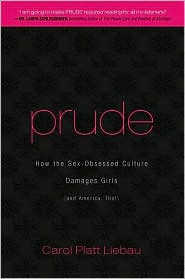The Real Che Guevara
This is Betsy Newmark
One of the most amazing examples of how down has become up and up down is the way that Che Guevara is idealized as a symbol of coolness in popular culture. There are two more movies about him schedule to come out about Guevara. And I somehow doubt that these are going to be movies showing the vicious, murderous history of what Guevara was like. For that, you could read the new book, Exposing the real Che Guevara: And the Useful Idiots Who Idolize Him by Humberto Fontova. You can also read this illuminating interview with Fontova.
Cross-posted at Betsy's Page.
One of the most amazing examples of how down has become up and up down is the way that Che Guevara is idealized as a symbol of coolness in popular culture. There are two more movies about him schedule to come out about Guevara. And I somehow doubt that these are going to be movies showing the vicious, murderous history of what Guevara was like. For that, you could read the new book, Exposing the real Che Guevara: And the Useful Idiots Who Idolize Him by Humberto Fontova. You can also read this illuminating interview with Fontova.
Cybercast News Service: What do you consider to be some of Guevara's greatest crimes or offenses that people today should know about?
Humberto Fontova: He was the chief executioner. He performed for the Cuban revolution what Heinrich Himmler performed for the Nazis. Everything Che Guevara did was directed by Fidel Castro. Early on, when they were in the mountains, Castro realized that Che seemed to relish executing little farm boys. There were executions carried out, carried out in the mountains, of so-called informers. I interviewed many people who witnessed those executions. There was no due process.
Che Guevara wrote a letter to his father in 1957 and to his abandoned wife. In the letter to her, he wrote, "I'm here in Cuba's hills, alive and thirsting for blood." Then, to his father, "I really like killing." The man was a clinical sadist, whereas Fidel Castro you could describe as a psychopath in that the murders did not affect him one way or the other. It was a means to an end - the consolidation of his one-man rule. Che has a famous quote, where he wrote, a revolutionary has to become "a cold killing machine." The thing was, Che Guevara was anything but cold. He was a warm killing machine. He relished the slaughter.
Cybercast News Service: Are there reliable estimates on the number of people killed by Guevara or killed as a result of his policies or orders?
Humberto Fontova: He was put in charge of the execution squads in early 1959. He stayed in charge of the prison where most of the executions took place in Havana. And in the months he was in charge there, about four months until July 1959, the estimates run from 500 to 1,182 men and boys sent to the firing squad without due process. But the system he set in place for the executions ... in that system of justice, according to "The Black Book of Communism" - the definitive source - by the mid-sixties, 14,000 men and boys had been executed in Cuba. That was the year, December 1964, when Che Guevara ... addressed the General Assembly, and he said: "Executions? Certainly we execute. And we will continue executing as long as it is necessary!" So, in other words, he still claimed the system. It was still his system at work.
Cross-posted at Betsy's Page.



2 Comments:
I agree, Ms. Newmark, the romanticization of Mr. Guevara is wildly inappropriate. I offer two observations about it:
First, it seems to be confined to radicals; I know damn few conventional liberals who participate in it. There are some youngsters who get caught up in this, but there are also youngsters who get caught up in the romance of Hitler and the Nazis; it's just an expression of youthful rebelliousness, a phase that they outgrow.
Second, I think much of it is based on that one photograph of that so perfectly captures the romance of the revolutionary. It's funny how a single image can have such a big impact, but that's what powerful images do. Were it not for that photograph, Mr. Guevara would be long forgotten.
Let's not make too much out of this. All reasonable and knowledgeable people agree that Mr. Guevara was a monster.
Considering the proliferation of Che Guevara paraphernalia and upcoming movies about him, I don't think it's "making too much of this" to point out the true nature of this brutal murderer.
At the very least, it's prudent to put these reminders in the same public domain and in the same time context in which the false romatacizing occurs. Then as youthful rebellion matures into adulthood, at least an alternate point of view will have been made available.
Post a Comment
<< Home